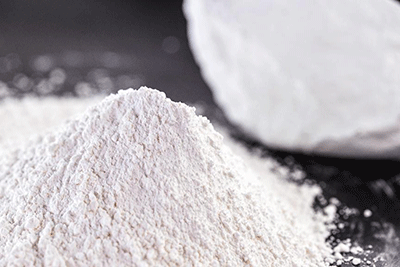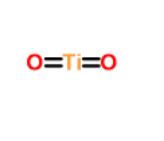


| Item | Index |
|---|---|
| Appearance | White powder |
| TiO2 content | 92.0% |
| Moisture | ≤0.4% |
| Reducing power | 2000 |
| Residue on 45μm | 0.01% |
| Oil absorption | 20.0g/100g |
| PH | 7.2 |
| Resistivity of water extraction | 100Ω |
| Specific gravity | 4.0g/cm³ |
| Inorganic coating | Alumina; Silica |
| Organic treatment | Present |
| Key features: |
1)Neural undertone 2)Easy wetting and excellent dispersibility 3)High tinting strength and opacity 4)Moderate gloss |
| Recommended applications: |
1)Water based paint 2)Solvent-based paint 3)Powder coating 4)Printing ink 5)Paper-making |
| Packing | In 25KG /500KG /1000KG bag or as per customer’s requirement |
|---|---|
| Storage | This product should not be stored outside or exposed to temperature extremes or to moisture.
To ensure optimum performance, it is recommended that the product is used on a first in, first out basis from receipt of shipment. |
Tel: 0086-25-52397808
E-mail: info@titanium-dioxide.net


| Common Names | TITANIUM DIOXIDE | ||
|---|---|---|---|
| Structure |

|
||
| CAS No. | 13463-67-7 | Boiling Point (℃) | 2900 |
| Molecular Weight | 79.866 | Melting Point (℃) | 1840 |
| Appearance | white powder | Bulk density | 3.84 |
| HS Code | 3206111000 | Flash Point (℃) | 2500-3000 |
| Safety Phrases | S2;S25;S26;S36;S36/S37 | ||
|---|---|---|---|
| RIDADR | No hazardous good according to the regulation. | ||
| WGK Germany | NONE | ||
| Packaging Group | NONE | ||
| Hazard Class | NONE | ||
| SYMPTOMS | PREVENTION | FIRST AID | |
| Inhalation | Cough. Sore throat. Redness. Burning sensation. Itching. | Use local exhaust or breathing protection. | Fresh air, rest. |
| Eyes | Redness. Pain. | Protective gloves. | Rinse opened eye for several minutes under running water. Then consult a doctor. |
| Ingestion | Abdominal pain. Nausea. Vomiting. | Do not eat, drink, or smoke during work. Wash hands before eating. | Rinse mouth. Induce vomiting (ONLY IN CONSCIOUS PERSONS!). Refer for medical attention . |
TiO2 R215 Applications
Titanium dioxide (TiO2) R215 is a type of titanium dioxide pigment that finds applications in various industries, including coatings, inks, leather, paints, plastics, and rubber. Titanium dioxide is a naturally occurring oxide of titanium and is widely used as a white pigment due to its excellent opacity, brightness, and high refractive index, which allows it to scatter light effectively. This makes it ideal for achieving vibrant and long-lasting colors in various materials.
Here's a brief overview of its applications in the mentioned industries:
1. Coatings: Titanium dioxide R215 is commonly used in the formulation of coatings, such as architectural paints, industrial coatings, and automotive finishes. It enhances the coating's hiding power, provides a smooth and durable surface, and helps protect the substrate from UV radiation.
2. Inks: In the printing industry, titanium dioxide R215 is used in the production of inks, especially in the manufacturing of high-quality, bright, and opaque inks. It aids in achieving vivid colors and sharp images in printing applications.
3. Leather: Titanium dioxide R215 is utilized in leather finishing and coating processes to impart a white color and enhance opacity. Additionally, it helps protect the leather from UV-induced fading and provides resistance to abrasion.
4. Paints: Apart from coatings, titanium dioxide R215 is widely used in various types of paints, including emulsions, enamels, and water-based paints. Its light-scattering properties contribute to the paint's coverage and brightness.
5. Plastics: In the plastics industry, titanium dioxide R215 is commonly added to plastic formulations to provide opacity, whiteness, and UV resistance. It is used in a wide range of plastic products, from packaging materials to consumer goods.
6. Rubber: Titanium dioxide R215 is employed in the rubber industry to enhance the appearance and durability of rubber products. It is commonly used in the production of white or light-colored rubber goods.